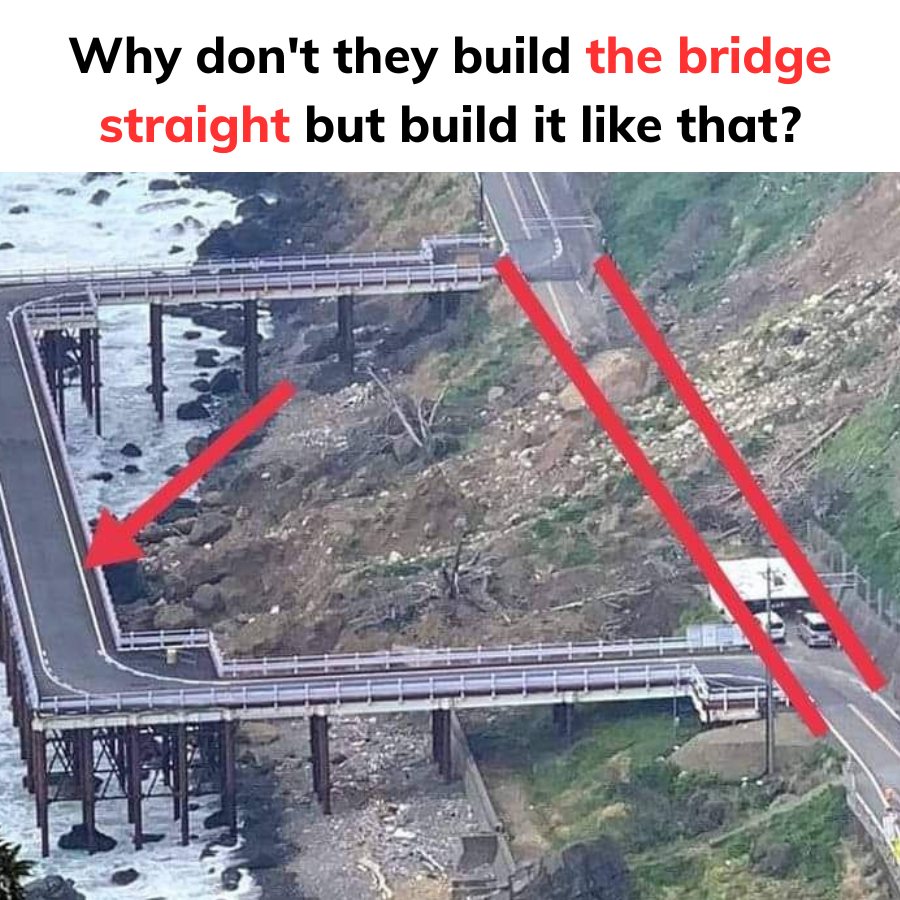Japan is globally renowned for its innovative and practical designs, often leaving the world impressed by its ability to tackle complex challenges with creative and efficient solutions. This ingenuity extends beyond cutting-edge technology into the realm of infrastructure, where Japanese engineers consistently set new standards in resilience and efficiency. One particularly striking example of this innovation can be found in Fukui, a region known for its frequent landslides. Here, engineers faced the challenging task of safeguarding a critical section of road and an adjoining bridge, both of which were regularly impacted by these natural disasters. Their response not only solved the immediate issue but also demonstrated the transformative power of thoughtful, sustainable design.

In Fukui, the natural terrain poses significant challenges. The area’s mountainous landscape, combined with heavy rainfall, makes landslides a common and unpredictable occurrence. These natural events threaten infrastructure, often leaving roads and bridges damaged, inaccessible, and unsafe. For the people living in the region, landslides disrupt daily life, hinder transportation, and pose serious safety risks. For the engineers tasked with addressing these challenges, the goal was not simply to repair the damage caused by landslides but to develop a long-term solution that would enable infrastructure to coexist with the harsh environment.
The challenge presented by Fukui’s frequent landslides was immense. Traditional approaches to infrastructure repair and protection often prove insufficient in such dynamic environments, where nature’s forces can be both relentless and unpredictable. The engineers had to consider not only the immediate problem but also how to create a system that would protect the road and bridge from future events. This meant thinking beyond conventional methods and embracing a design philosophy rooted in adaptability, sustainability, and innovation.
To address the issue, the engineers implemented a unique and highly effective solution. They designed a system that combined structural reinforcements with strategically placed barriers. These barriers were carefully engineered to redirect the force of falling debris, preventing it from reaching the road and bridge. By channeling the energy of the landslides away from critical areas, the system minimized the impact of the natural disaster and significantly enhanced the durability of the infrastructure. This method not only addressed the immediate threat but also provided a sustainable, long-term strategy for managing the risks associated with landslides in the region.
The brilliance of this solution lies in its simplicity and functionality. Rather than attempting to fight nature head-on, the design works in harmony with the environment, acknowledging the inevitability of landslides while mitigating their effects. This approach reflects Japan’s meticulous attention to detail and commitment to finding innovative solutions that balance practicality with creativity. Every element of the system was carefully considered, from the materials used to the placement of the barriers, ensuring that the infrastructure would remain safe and functional for years to come.
The success of this project in Fukui is more than just an engineering achievement; it is a testament to human resilience and adaptability. By working with nature rather than against it, Japanese engineers have shown how intelligent design can minimize risks and enhance safety, even in the most challenging conditions. This approach underscores the importance of innovation in addressing environmental challenges and highlights the potential for creative solutions to transform the way we interact with the natural world.
Beyond its immediate impact on Fukui, this project serves as an inspiring example for the global community. In a world where environmental challenges are becoming increasingly complex and frequent, the need for innovative infrastructure solutions has never been greater. The Fukui project demonstrates that by thinking outside the box and embracing a holistic approach, engineers can develop systems that are not only effective but also sustainable. This kind of forward-thinking design encourages others to look beyond traditional methods and explore new possibilities for addressing the unique challenges posed by nature.
Japan’s ability to blend innovation with functionality has cemented its position as a global leader in infrastructure development. The success in Fukui is yet another example of the country’s dedication to excellence and its commitment to creating solutions that stand the test of time. By prioritizing safety, sustainability, and adaptability, Japanese engineers continue to inspire and set a benchmark for the rest of the world. The project in Fukui is not just a story of overcoming adversity; it is a powerful reminder of the potential for human ingenuity to create a safer, more resilient future.





